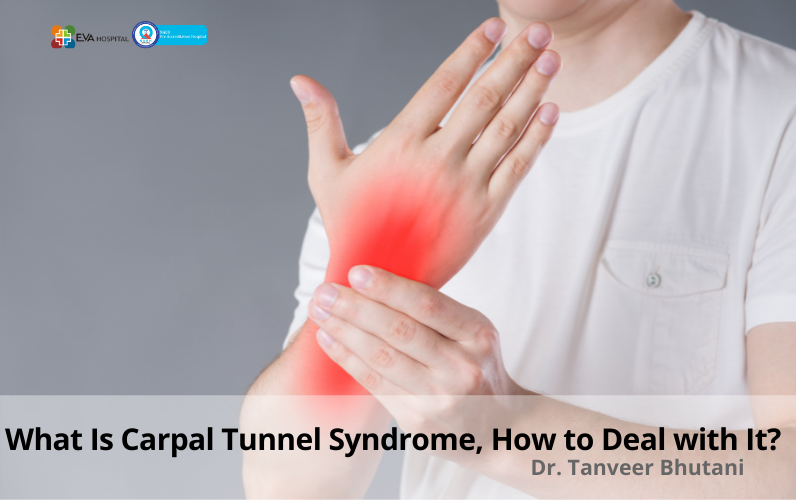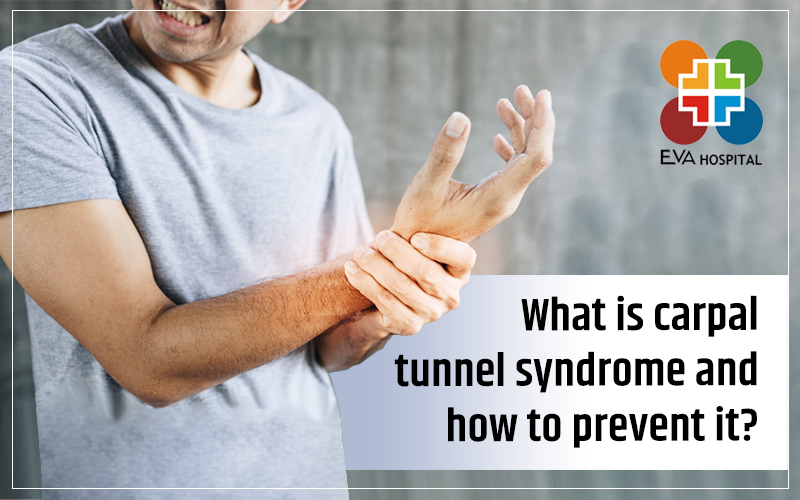
What Is Carpal Tunnel Syndrome, How to Deal with It?
Carpal Tunnel Syndrome (CTS) affects patients who have been physically extremely active in hand movements over a period of time.
CTS occurs due to the prolonged compression of the median nerve of the hands that lie in the carpal tunnel. It is responsible for controlling and aiding the movement of our thumbs and fingers.
Orthopedic surgeons and Rheumatologists are specialists in dealing with patients who are diagnosed with CTS.
CTS happens over time and may increase in its symptoms in advanced stages. The main median nerve is compressed due to continuous pressure at the carpal tunnel and affects the ability of the nerve for regular functioning.
Signs That You May Have CTS
Here are some of the signs of CTS, you can always visit Eva Hospital for a proper prognosis,
- The sensation of tingling in the fingers.
- Noticeable swelling of the fingers.
- Muscle weakness affecting the utility of your hands.
- Pain in your arms.
If you have any of the following symptoms and if it has been persistent over a while, a quick consultation with a doctor must be made. There is an estimation by the US National Library of Medicine, National Institutes of Health (NCBI) that 4% to 5% of adults are prone to CTS globally.
CTS Diagnosis
CTS diagnosis is made through various physical exams. The patients in their first visit are examined physically, asked to move their wrists (Phalen test) in various angles, gentle tapping (Tinel’s Test) to find the extent of damage to the nerve.
Doctors also may ask for other exercises requiring elevation of the hands. Other tests include Magnetic resonance imaging (MRI) and Ultrasound.
Treating CTS
Eva hospital is well equipped to deal with the treatment of CTS. You will first be examined by Dr. Tanveer Bhutani and his team, followed by the diagnosis and line of treatment. CTS can be treated in surgical and non-surgical ways.
Non-surgical methods are used when the patient is not at risk of an advanced stage.
Non-surgical methods include,
- Physiotherapy
- Having a higher fluid intake in your body
- Prescribed medications
- Using a splint to prevent further damage
The surgical method includes an incision made after sedating the patient. The process involves cutting the ligament to decrease the pressure on the median nerve.
Two common surgical methods include:
Open release surgery – involves a small cut to the wrists to reach the carpal ligament
Endoscopic surgery – under complex circumstances a deep cut is made and a camera inserted to observe the extent of damage of the nerve, finally cutting the carpal ligament.
Read More: Office and Work – Understanding Repetitive Stress Injuries (RSIs)
If you are not at grave risk and the pain that you feel is bearable, it is advised to rest and refrain from physical activity. Resting at home and allowing the splint to do its work over time will help repair muscles.
The symptoms take several years to develop and if you have been working specifically that involves continuous activity of your writs, fingers, and hands over some time and there are signs and discomfort, one needs to consult the doctor.
At Eva, we take due care of all the patients and ensure that they are at ease and receive the best medical care.







